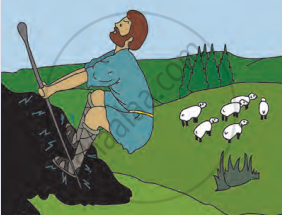Topics
Physical Quantities and Measurement
- Measurements
- Physical Quantities
- Volume and It’s Unit
- Measurement of Volume
- Area and It’s Unit
- Measurement of Area
- Density and It’s Unit
- Measurement of Density
- Determination of Density of a Regular Solid
- Determination of Density of an Irregular Solid
- Determination of Density of a Liquid
- Speed
Force and Pressure: Motion
Energy
- Energy
- Forms of Energy
- Mechanical Energy
- Potential Energy (U)
- Kinetic Energy (K)
- Types of Kinetic Energy
- Conversion of Potential Energy into Kinetic Energy
- Transformation of Energy
- Conservation of Energy
- Electricity Generation using Hydroelectric Energy
Light Energy
- Light
- Reflection of Light
- Plane Mirror
- Terms Used in Reflection of Light
- Law of Reflection of Light
- Verification of the Law of Reflection of Light
- Reflection of a Ray of Light Normally Incident on a Plane Mirror
- Images Formed by a Plane Mirrors
- Formation of Image by Reflection: Real and Virtual Image
- Lateral Inversion
- Types of Reflection
- Speed of Light
- Colour
Heat
- Heat and Its Unit
- Heat Exchange
- The Temperature and a Thermometer
- Measuring Temperature
- Scales of Thermometers
- Effects of Heat
- Expansion of Substances (Thermal Expansion)
- Expansion of Solids
- Expansion of Liquids
- Expansion of Gases
- Transfer of Heat
- Conduction
- Convection
- Radiation
- Conductors and Insulators
- Thermos Flask (Dewar Flask)
Sound
Electricity and Magnetism
- Magnet
- Discovery of Magnets
- Classification of Magnets
- Magnetic Properties
- Laws of Magnetism
- Magnetic Field
- Electromagnet
- Making of an Electromagnet
- Applications of Electromagnets
- Electric Bell
- Earth’s Magnetic Declination
- Electricity
- Sources of Electricity
- Electric Circuit
- Conductors and Insulators
- Analogy of Electric Current with Water Flow
- Flow of Charges (Electrons) Between Conductor
- Symbols and Functions of Various Components of an Electric Circuits
- Types of Circuits: Series Circuit
- Types of Circuits: Parallel Circuit
- Electric cell
- Battery
Discovery of Magnets:
Magnes was a shepherd who lived in ancient Greece. According to legend, he played a key role in discovering magnets.
- One day, while Magnes was resting on a large rock with his sheep nearby, something unexpected happened. When he tried to stand up, he couldn't move easily.
- His walking staff and the shoes, which had iron parts, were stuck to the rock. It took a lot of effort for him to pull himself free.
- Unlike other rocks, this particular rock had the ability to attract iron. This was because the rock contained magnetite, a naturally magnetic material.
- The rock was named magnetite after Magnes, the shepherd. This is how magnetite got its name and how people began to understand the properties of magnetic materials.
- It is also believed that the word "magnet" might have originated from "Magnesia," a region in Greece where these magnetic rocks were first found.

The story of Magnes
If you would like to contribute notes or other learning material, please submit them using the button below.
